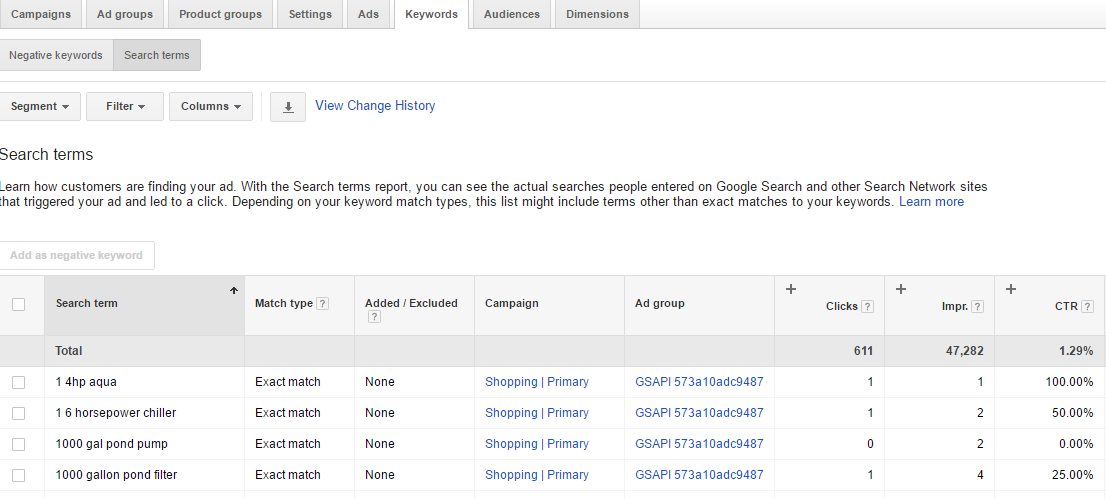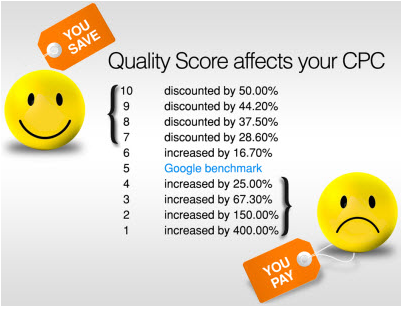Text ads can be an integral part of a successful online marketing campaign. These deceptively simple marketing tools play an important role in any AdWords campaign, but what exactly are text ads, and how can you use them to increase traffic and conversions for your e-commerce business?
The Basics
Text ads are just what their name implies: short, text-driven advertisements presented to Google users. Text ads are comprised of three distinct sections: a headline, a display URL, and a description. Each text ad has up to two 30 character headlines, which, as you might expect, are used to grab the attention of a Google user.
The second component of a text ad is the display URL, which is comprised of a final domain URL and any additional text from the optional path fields. The path fields have a text limit of 15 characters, and are designed to allow users to better understand where a link will direct them if it’s clicked. The third component of a text ad is its description, which is an 80-character explanation of the products or services offered by the advertiser. As with any advertisement, it’s important to include a call-to-action in a text ad’s description, so users can determine what action to take.
Text ads can appear across Google’s offerings and can appear in various places within those offerings. As a result, your text ad can appear to a wide variety of Google users, including those who use Google’s partner sites. Text ads that appear on Google search sites appear on Google Search, Google Play, Google Shopping, and the Maps app. Partner sites include a wide variety of non-Google sites and Google Video, which ensures that your text ad will appear to a cross-section of users.
Maybe you are already using them, maybe you’re not. Either way, here are few useful, yet critical maintenance tips to help you optimize your Text Ad campaigns for higher performance.
Search Query Reports
One of the major, first-off go-to steps to any solid maintenance plan is all about mining keywords from Search Query Reports. This can be found in the campaign level under the keywords tab in search terms.
Checking new search terms each week enables you be proactive about analyzing the traffic and metrics from your ads and adjust for any changes that may affect performance.
- Negative Keyword Mining: If a search keyword included in the report is not relevant to a product that you sell, consider adding it to the account as an exact or phrase negative keyword. It is best practice to add these unrelated product keywords on the campaign level. Adding negative product keywords at the campaign level ensures the irrelevant products will no longer show in any ad group in the campaign. It is highly recommended to add product negatives as “phrase” match since this will eliminate all variations of the keyword across the account.
- High Cost, Low Or Zero Conversions: Filtering out keywords with high ad spend and little to no conversions is a key step in search query managemement. An account can have high traffic and thousands of keywords each week, but a high ad spend filter will help you weed out expensive terms eating up budget without converting. It is best to focus on high ad spend negative keywords in a large account because high ad spend negative keywords contribute to the least relevant traffic and the most wasted spend.

Quality Score Checks
Another simple maintenance step is to go into the account and review the Quality Score of each keyword. Quality Score is Google’s rating of the quality and relevance of both your keywords and PPC ads. One of the fastest ways to improve one’s Quality Score is by pausing the lower quality keywords in the account.
- How: If you have access to Google AdWords Editor (and if not, you should install it now)
click on the campaigns tab so all campaigns are selected. This way you will be able to see all the keywords in the account at one time, making updating quality score easier. Once you can see all the keywords in the account make sure to sort by Quality Score (lowest – 1 to highest – 10). It is best practice to pause any keywords that have a quality score lower than 2. Lower keywords have lower rankings and cost more. By pausing these keywords, you will increase relevant traffic while lowering cost.

Quality Score has a direct effect on your Cost Per Click so staying in control of your Quality Score can help you save vital advertising dollars.
A/B Test Ad Copy
Testing out variations in Ad Copy stands out as a standard best practice for analyzing how different words and combinations of keywords or ad extensions can impact the performance of your ads.
- Start With Multiple Variations: When first building your ads, and especially now with Expanded Text Ads, having between 3-5 variations in ad copy is a great starting point for any ad group. After collecting at least a few weeks of data you can review your ads and utilize Click-Through-Rate filters to see which ad copy was the most enticing. First test out a “Call to action” in the headline. This aims to stimulate the potential shopper to click an ad. An example would be “Visit Our Online Store Today”. Next create a new test ad with the same information but a different headline. The new headline should reflect the individual business’s assets or features. Such as “Free Shipping on Orders Over $250” or “In Business For Over 25 Years”. It is important to test both headline types ads at the same time you can see the comparison of which appeals more.

- Use Drafts & Experiments: In the event that you’d rather test campaigns without spending any actual advertising dollars, consider the use of AdWords Drafts & Experiments. Drafts allow you to prep several changes to a campaign without impacting its actual performance. You can then convert a Draft into an Experiment. An Experiment will act similarly to a side-by-side comparison where you can dictate how much of the traffic and/or budget from the original campaign you wish to let it use. As the experiment runs (per however long you wish), you can measure it’s performance against the base campaign and see which performs better.
*Contributing Author Ryan McDonald: A seasoned veteran in enterprise service sales, Ryan is now a Customer Success Specialist and Certified Google Shopping Expert at Sales & Orders.

